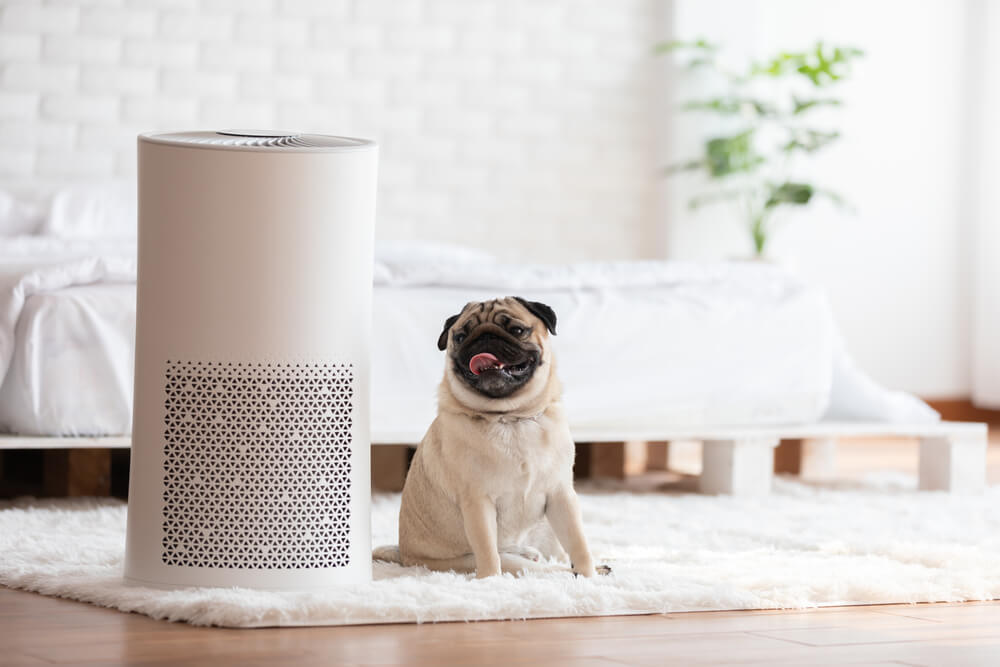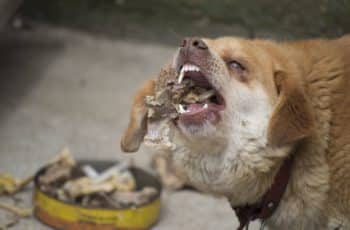If you or a member of your family is allergic to dogs, but you’ve always wanted a dog, you have a difficult decision to make: do you forego the fun, love, and affection that a pooch can provide or do you deal with the congestion, sneezing, and itchy, watery eyes? If you have always longed for a four-legged family member, you might be wondering if you should just invest in a lot of allergy medicine (which can pose a variety of problems), or if there’s a better solution.
If you or a loved one suffers from allergies, fortunately, there is an option that you can consider that doesn’t involve taking allergy meds on a constant basis. What is it? Adopting a hypoallergenic dog!
But what about Pugs? Their smooshy little faces, jaunty walk, cute snort, and friendly disposition are just some of the reasons why pugs are such a popular dog breed. But are they hypoallergenic?
Unfortunately, no, Pugs are not hypoallergenic and therefore not a great choice for people with pet allergies.
Non-Hypoallergenic vs Hypoallergenic Dogs: What’s The Difference?
To understand that, you first need to understand what causes allergic reactions to canines. Like a lot of people, you might think that it’s the fur that’s causing your allergies, but in reality, it’s the dander and the protein that it carries.
Pet dander is similar to human dandruff; it’s dried, flaky skin, mixed with dust and particles found in the air that attaches to a dog’s hair. Non-hypoallergenic dogs are generally really hairy dogs who shed a lot which means they release a lot of dander, which causes allergy attacks.
Some non-hypoallergenic dogs can also salivate more than other breeds which causes a person’s allergies to flare up due to the bacteria found in the saliva.
Dog urine can also cause people to have allergies flared up due to the certain kinds of bacteria it secretes.
Hypoallergenic dog generally have shorter coats, some don’t have an undercoat, their hair is more like that of a human which means they don’t shed as much and thus are a perfect choice for people with pet dander allergies.
Is a Pug Hypoallergenic?
Unfortunately, no, Pugs are not hypoallergenic 🤧.
Why?
Well, because they shed a lot, and the more a dog sheds, the more dander they release. Some pugs have double coats, which is comprised of a soft inner layer and a short outer layer of fur, and a double coat translates to double the shedding.
Is a Pugapoo Hypoallergenic?
If you are longing for a pug (we really can’t blame you!) and you suffer from allergies, a pugapoo may be a better option for you.
A pugapoo (also referred to as a “pugpoo”, a “pugadoodle”, or a “pugoodle”), as the name suggests, is a pug and a poodle mix.
While pugapoos vary and their appearance depends on the genetics that are passed down from their parents, generally speaking, they aren’t large dogs; males measure between 10 and 15 inches tall and weigh 15 to 30 pounds, while females stand between 8 and 12 inches tall and weigh between 10 and 25 pounds.
Their coats vary, as well. If a pugapoo has a coat that is more similar to a poodle’s, it will be longer and it will have a bit of a curl, and if it’s more like a pug’s, the coat will be shorter and straighter.
Pugapoos are considered more hypoallergenic than pure-breed pugs, as poodles are one of the most allergy-friendly dog breeds.
If a Pugapoo’s fur is more like a poodle’s, he’ll be more hypoallergenic than a Pugapoo that ha fur that more closely resembles a pug’s. It’s because Pugapoos are part poodle that they’re considered a hypoallergenic breed, so if you suffer from allergies and you’ve always wanted a Pug, a pug/poodle mix may be the right option for you.
It’s important to note, however, that if you do decided to adopt a Pugapoo, while your allergy symptoms may not be as severe, it’s important to note that you will likely have to deal with a stinky smell. That’s because pugs are one of the most smelliest dog breeds 🤢 ; but, the good news is that a Pugapoo may not be as overpowering as a pure-bred pug, as they’re half poodle, and poodles really aren’t stinky.
Do Pugs Shed?
Yes, Pugs, including black Pugs are a heavy shedding breed who shed all year round and why they’re not a hypoallergenic breed.
Pugs with a single coat shed less than those with a double-coat.
Do Pugs Have Dander?
Yes, Pugs have dander. Pugs with a double coat produce more dander than those with a single coat.
Is there a dog with no dander? No, but there are dog breeds which we will discuss below that produce considerably less pet dander.
Do Pugs Have Odor?
Yes, Pugs are known for their pungent odors. That’s due to several reasons:
Tips for Managing Allergies with a Pug

If you have or a loved one suffers from pet allergies but you have your heart set on adopting a pure-bred Pug or a Pugadoodle, take comfort in knowing that there are things that you can do to lessen the symptoms and make the situation less severe.
- Brush regularly. One of the easiest ways to keep allergies to a minimum is by brushing your Pug on a regular basis. At least once a week, give your four-legged family member a good brushing using a rubber brush (available on Chewy). Doing so will eliminate loose hair and the dander that’s attached to it. Make sure that you brush your pooch outside to avoid excess hair buildup in your home.
- Bathe frequently. Frequently bathing your Pug will kill two birds with one stone: it will help to remove loose hair and the dander that’s attached to it, and it will also help to prevent or resolve your pooch’s stinky smell. When we say frequent, we mean bathing once every three months or so, because too much bathing can be detrimental to your pug’s skin and fur. Use a mild shampoo that’s made of natural ingredients like this one from Earthbath. If you don’t have time for a bath after a walk, you can use deodorizing wipes instead, since they also have antibacterial properties.
- Keep up on housekeeping. Another way to keep allergies to a minimum when you have a pug is by keeping your house clean. Because dog-related allergies are caused by the protein in dander, and since that dander attaches to and spreads via loose hair, keeping your house neat and orderly is essential to keep loose hair and the dander that’s attached to it to a minimum.
- Keep your Pug off your furniture. Though it may be tempting to invite your four-legged family member to snuggle on the couch or to curl up in bed with you, if you suffer from allergies, resist the temptation. Your pet’s hair and the dander that’s attached to it will fall off onto your furniture and can become embedded into the fibers, which means that you could suffer an allergy attack whenever you sit or lie down, even when your pooch isn’t present.
- Use a HEPA filter. You might want to invest in a high efficiency air particulate (HEPA) air filter, too. These air filters capture up to 99.5 percent of super-fine particles that float through the air, including your pug’s hair and the dander that sticks to it. Plus, a HEPA filter air purifier like this one (found on Chewy) can also eliminate other airborne irritants that you or family members may be allergic too, which further help to minimize allergy symptoms.
- Get a good pet vacuum. Vacuum brands like Shark, iRoobot and Bissell make specifically designed vacuums to pull up pet hair and trap dander. They’re great for floors, steps, carpets, window blinds and large rugs.
- Use an Omega Fatty Acids supplement – like fish oils. Adding Omega fatty acids to your pug’s diet will help keep their coat soft and healthy and reduce shedding. Zesty’s Paws Pure Alaskan Salmon Oil (buy it here) contains both EPA (eicosapentaenoic acid) and DHA (docosahexaenoic acid) and all it takes is 1 teaspoon added to their meals for skin health and a healthy coat.
4 Small Dogs With the Least Dander
There are other small dog breeds that that are similar in size and stature to Pugs and Pugadoodles that release minimal allergens. Here’s a look at four small dog breeds that have the least amount of dander.
The Quick-Witted Poodle
The Poodle comes in three sizes – toy, small, and large – and all are considered hypoallergenic. That’s because the shedding level of the high-energy, super-intelligent poodle is minimal. To keep allergies to a minimum, bathe your Poodle once a week and brush whenever necessary, or at the time of clipping, which should be done every 3 to 6 weeks.
The Petite Yorkshire Terrier
This toy-sized breed has loads of energy and is a good choice for allergy sufferers. Their coat can grow long; however, when kept short, allergies can be further reduced, and should be shaved every 4 to 6 weeks. Brushing daily or every other day will help to prevent matting.
The Affectionate Shih Tzu
Another toy-sized breed, the Shih Tzu is an allergy-friendly, low energy dog with a friendly disposition. Again, their coat can grow long; however, when kept short, allergy symptoms can be kept to a minimum. A Shih Tzu’s coat should be cut every 4 to 6 weeks, and should be brushed daily. This breed should also be bathed on a weekly basis. Ears should also be cleaned weekly, and teeth should be brushed once a week, too. Nails should be trimmed once a month. Shih Tzu’s do tend to develop eye problems, so make sure to wipe them on a daily basis and you may want to use eye drops, too.
The Lionhearted Brussels Griffon
Yet another toy-sized breed, the Brussels Griffon is allergy-friendly. Grooming needs depend on the type of coat. Smooth coats can just be wiped down, rough coats should be brushed weekly and hand-stripped every few months, and bathing should be done on an as-needed basis; typically once a month. For both the smooth- and rough-coated Brussels Griffon, the eyes and ears should be washed weekly to avoid infections, and the nails should be clipped monthly.
Other Small Hypoallergenic Dog Breeds
There are several other toy and small dog breeds that produce low levels of allergens, which make them the perfect choice for individuals who suffer from pet-related allergies. The following are some great breeds to consider:


